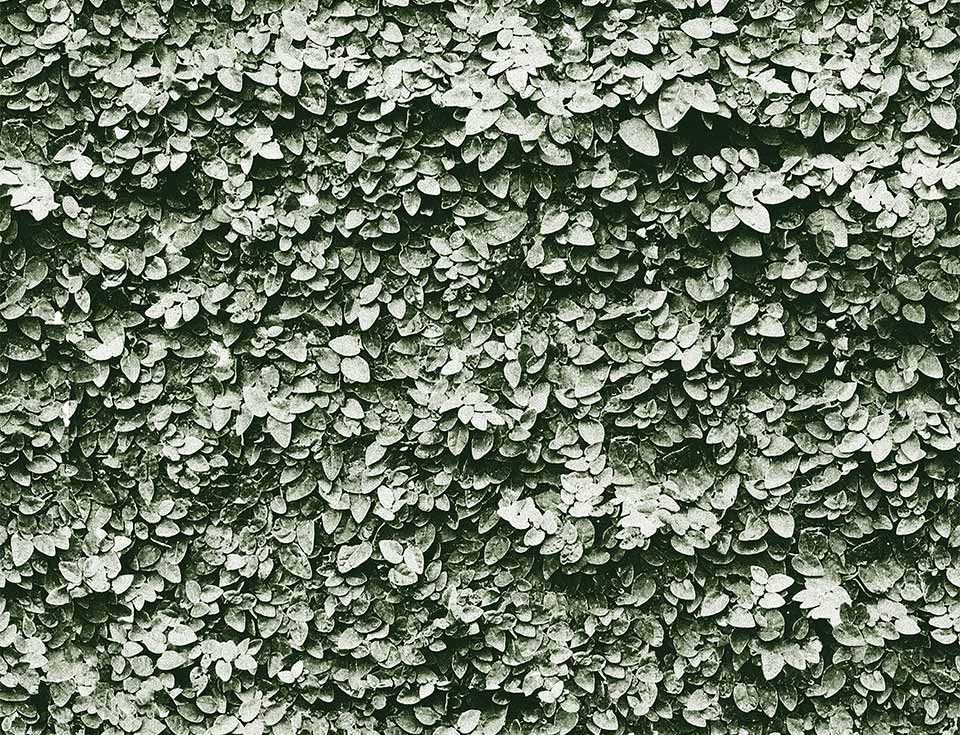Printed Tensile Cladding at Rice University
A new parking structure at Rice University has a paneled façade printed with a fig vine pattern.
©G. Lyon Photography
In 2015, Rice University commissioned KieranTimberlake to design a combined administrative building and parking structure for a newly activated campus entrance in an area defined by live oaks, an alee of cedar elms, and longstanding campus buildings. “We needed to find a way to carefully situate this tall structure within the existing campus context,” Associate David Hincher said.
Its position alongside the President's Office and the Cohen House, a popular indoor/outdoor event space, meant that the garage needed to do more than just blend in. It had to function within a distinctive landscape and extend a legacy of thoughtful planning at Rice.
Our solution took the form of a paneled facade of woven, permeable polymer material. Cost effective, tensile, and incredibly strong, the material is stretched between trapezoidal paneled frames that are angled to break up the garage's scale, maintain visual interest, and create strategic breaks in the facade that allow light and natural air into the garage while reducing the glare that can be seen from its neighboring spaces. “Angling the panels away from the outer structure was our way of providing balance,” Hincher offered. “It helps enliven the facade as light and shadow pass across it, but it also helps to break down the scale of the building while ventilating the garage's interior to avoid the cost and emissions associated with mechanical ventilation.”
The 40-foot tall fig vine pattern was carefully designed to have no discernible seams.
While its strength and flexibility are key to its functionality, one of the polymer material's desirable attributes is that is can be screen printed. We took advantage of this opportunity to tie the facade back to the site's greenery and the dappling of light and shadow that it creates by printing it with a fig vine pattern, a prevalent Houston plant species. To cover 200 feet of facade without discernible seams, we created a 40-foot tall repeat pattern designed to help the fabric panels recede. “During design, it was important to find areas that were particularly eye-catching and modify them so they didn't give away the pattern,” graphic designer Carly Regn said. “I designed clusters of leaves that seamlessly repeat across the panels' edges.” Each panel was then rotated and seamed together to create a cohesive facade that transforms the parking garage from a necessary piece of infrastructure into a large-scale outdoor sculpture.
The low-maintenance, long-lasting façade (which weathered Hurricane Harvey in its first few months) can also adapt over time. “The fabric and ink has been tested to ensure it won't fade or crack with sun, wind, or rain exposure,” Hincher said, “but if 10 years down the line the university decides they want a new graphic, they can easily replace the panels without having to renovate the building.”




